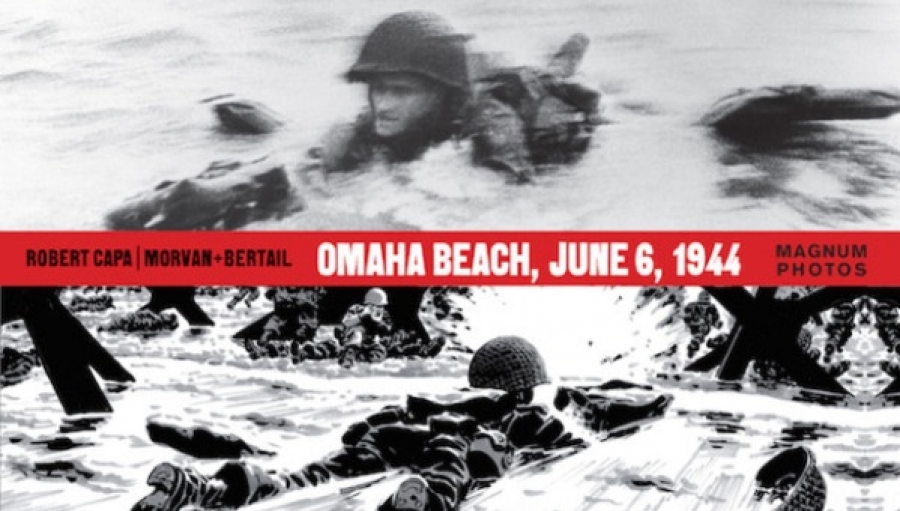Robert Capa famously said, “If your pictures aren’t good enough, you’re not close enough.” In the profession of photojournalism, this adage frequently sends brave men and women into the thick of armed conflict. It sent Robert Capa onto Omaha Beach during the Allied invasion of Normandy on June 6, 1944, where he captured one of the most iconic photographs of World War II.
Omaha Beach on D-Day tells the story of Capa’s brief, but perilous, work during the invasion. Morvan, Trefoil, and Bertail begin the tale as a graphic novel, from intimate portraits of Capa’s time in London before and after the invasion, to stunning double-page panels of the vast coastal battlefield. The story narration is from Capa’s point of view and ends with Capa headed off to his assignment in the First Indochina War, where Capa will step on a land mine in Southeast Asia and be killed.
The final two sections of the book highlight the photos Capa took on Omaha Beach and outline a full biography of Capa’s life and career. The juxtaposition of artistic illustration and photography craft an intimate documentary that lets the reader feel like they are truly in Capa’s head. It drives home the reality that there is a person behind the lens, that the photographer is a living, breathing person, putting him or herself at much the same risk as their subject.
During Capa’s transport back to London from the Normandy coast, he spends time talking to an injured soldier. They discuss the nature of bravery, each describing their own experience on the beach as cowardly and insisting that the other was truly brave. It is an expression of survivor’s guilt that is as old as war itself, and it reminds us that there are many forms of heroism, in both soldier and correspondent alike. There is no measure of valor adequate to the task of honoring these men and women.
The profession of photojournalism has been around almost as long as our ability to take a photograph. Since the mid-1800s, photographers have dragged their equipment onto the battlefield and attempted to capture the before, during, and aftermath of war. Technology has varied greatly over the course of this history, and today, photojournalists have unprecedented ability to report directly from the battlefield.
It particularly struck me that Robert Capa’s work on Omaha Beach required him to carry and protect rolls of film while attempting to maneuver even a few feet of beach while under heavy German machine-gun fire. Capa managed to shoot 4 rolls of film that day. He then had to physically deliver those rolls of film to his publisher, where a developing room accident destroyed all but 11 pictures. Such a small outcome from such a perilous undertaking.
It is difficult today, when we have the ability to take thousands of photos and deliver those pictures wirelessly and immediately to the world at large, to properly comprehend the priceless nature of the work of a wartime photojournalists. Regrettably, the ease of technology doesn’t make the work these brave photographers undertake, amateur and professional alike, any less dangerous or priceless. Every time they click the shutter, they risk body and mind to bring the rest of the world images of unimaginable and seemingly unending horror.
It’s up to us pay the same rapt attention to their work as Omaha Beach on D-Day gives to Capa’s. It’s the work of a courageous, dedicated, and ultimately sacrificed lifetime.

